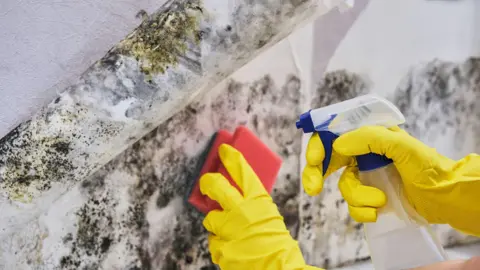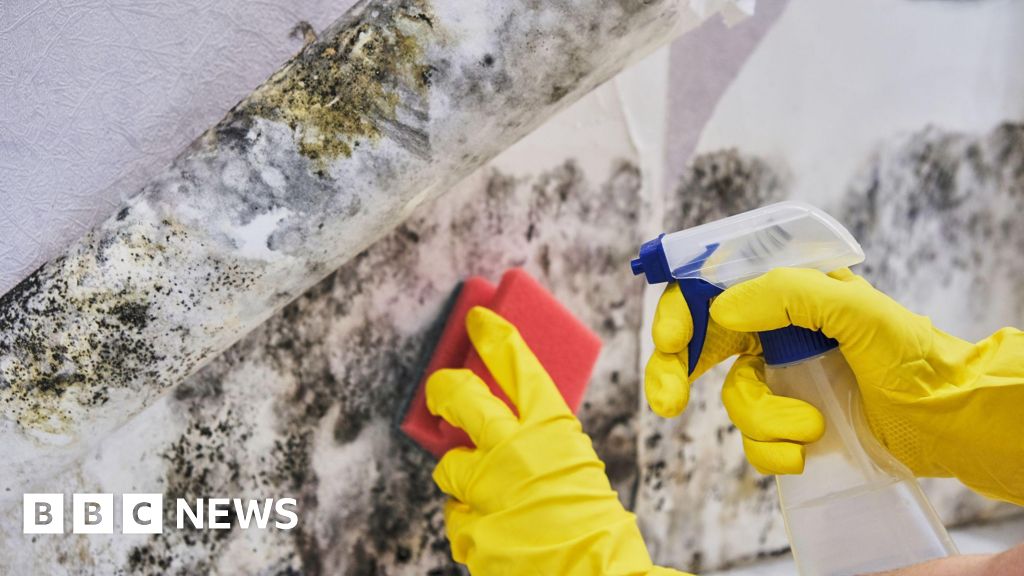 Getty Images
Getty ImagesLandlords will be forced to investigate and fix damp and mould in social housing in England within strict timescales from October, the government has announced.
Campaigners had called for the reforms after two-year-old Awaab Ishak died from mould exposure at his Rochdale home in 2020.
However, the implementation of the changes – known as Awaab’s law – will be phased, with timeframes for other hazards, such as structural and electrical issues, not introduced until 2026 at the earliest.
Housing charity Shelter said the delays “represent a real risk to the health and safety of tenants, and puts lives at risks”
From October, social landlords – generally the local council or a housing association – will also be required to repair all emergency hazards within 24 hours.
Timescales for investigating other hazards will be set out in the government’s response to a consultation, at a later date.
However, previous proposals under the Conservatives suggested social landlords should be required to investigate and provide a timeline for repair within 14 days of being made aware of the hazard.
Under those proposals, if there is a significant risk to health or safety repair works must begin within 7 days.
Landlords who fail to comply face being taken to court and ordered to pay compensation.
In a written ministerial statement, Deputy Prime Minister Angela Rayner said the phased approach allowed protections from damp and mould to be brought in earlier and enabled an initial period of testing to ensure the changes were implemented effectively.
In 2026, timeframes for non-emergency repairs will apply to a wider range of hazards including excess cold and heat, structural collapse, fire, electrical faults and hygiene hazards.
Then in 2027, this will be expanded to the remaining hazards listed in regulations, excluding overcrowding.
The government stressed that this “in no way means that social landlords have any leeway when it comes to meeting their existing duties to address dangers to health and safety present in their homes”.
Social landlords already have a duty to keep their homes fit for human habitation and free of hazards.
 Family handout
Family handoutAwaab’s law was first passed in July 2023 under the previous Conservative government but has not yet been brought into force.
Polly Neate, chief executive of Shelter, said the latest announcement “means social housing tenants will have to wait years longer for this vital protection”.
She added: “The government must make good on their promise and fully and swiftly implement Awaab’s Law.”
Kate Henderson, chief executive of the National Housing Federation, which represents housing associations, said the sector was “committed to ensuring the failures that led to the tragic death of Awaab Ishak never happen again and that all homes are free from serious hazards”.
However, she said housing associations were facing “unprecedented financial pressures” and issues such as overcrowding, which contribute to damp and mould, “can only be solved through funding for new social homes”.
The government is also planning to extend Awaab’s law to the private rented sector in the Renters’ Rights Bill, which is currently making its way through Parliament.
Ministers have previously said they hope the law will be passed by the summer.
Damp problems are more prevalent in privately rented homes, with 9% of homes affected, compared to 7% of social housing in 2023, according to the English Housing Survey.
Rayner, who is also housing secretary, said: “We have a moral duty to ensure tragedies like the death of Awaab Ishak never happen again.
“Landlords cannot be allowed to rent out dangerous homes and shamelessly put the lives of their tenants at risk.”

















Leave a Reply